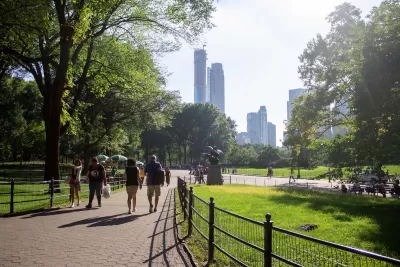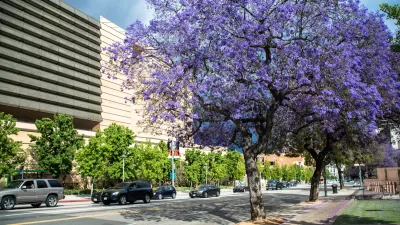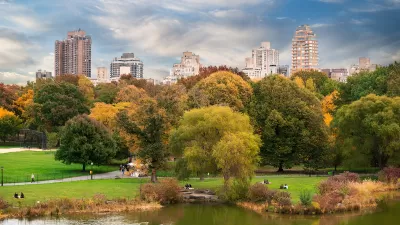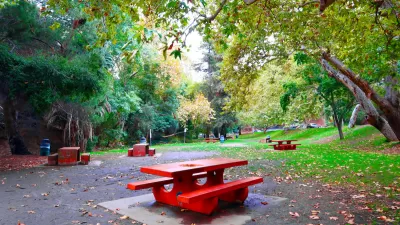A study comparing green space and walkability scores found that, without effective access to local parks, residents of greener neighborhoods don’t reap the health benefits.

Adding to the growing body of research about the built environment and public health, Thor Christensen describes a new study in American Heart Association News.
The study looked at two metrics assessing green space and walkability in neighborhoods to understand the relationship between them. While previous research indicates that people in neighborhoods with more green space tend to have lower heart disease risk, the new study reveals that this only holds true in neighborhoods that also have high walk scores—in other words, where residents can meaningfully access green spaces.
In fact, “When researchers looked simply at green space, they found cardiovascular diseases and risk factors were actually more common in people living in neighborhoods with a high NatureScore, compared with those living in less green neighborhoods.” Areas with the highest NatureScore and high walk scores showed a 9 percent lower chance of cardiovascular disease risk factors.
This leads to a logical conclusion: “To maximize the benefits of green space, people have to interact with nature,” says Dr. Omar Mohamed Makram. According to Dr. Ray Yeager, “There's a general notion that green space is good for health, but there's really not a lot of evidence to understand the many complexities involved between vastly different forms of green spaces, communities and built environments.”
The study underscores the need to cross-analyze metrics such as walk scores to understand the broader context and the reality behind the measure.
FULL STORY: For green spaces to be most beneficial to health, they need to be walkable

Alabama: Trump Terminates Settlements for Black Communities Harmed By Raw Sewage
Trump deemed the landmark civil rights agreement “illegal DEI and environmental justice policy.”

Study: Maui’s Plan to Convert Vacation Rentals to Long-Term Housing Could Cause Nearly $1 Billion Economic Loss
The plan would reduce visitor accommodation by 25% resulting in 1,900 jobs lost.

Planetizen Federal Action Tracker
A weekly monitor of how Trump’s orders and actions are impacting planners and planning in America.

Wind Energy on the Rise Despite Federal Policy Reversal
The Trump administration is revoking federal support for renewable energy, but demand for new projects continues unabated.

Passengers Flock to Caltrain After Electrification
The new electric trains are running faster and more reliably, leading to strong ridership growth on the Bay Area rail system.

Texas Churches Rally Behind ‘Yes in God’s Back Yard’ Legislation
Religious leaders want the state to reduce zoning regulations to streamline leasing church-owned land to housing developers.
Urban Design for Planners 1: Software Tools
This six-course series explores essential urban design concepts using open source software and equips planners with the tools they need to participate fully in the urban design process.
Planning for Universal Design
Learn the tools for implementing Universal Design in planning regulations.
Caltrans
Smith Gee Studio
Institute for Housing and Urban Development Studies (IHS)
City of Grandview
Harvard GSD Executive Education
Toledo-Lucas County Plan Commissions
Salt Lake City
NYU Wagner Graduate School of Public Service





























